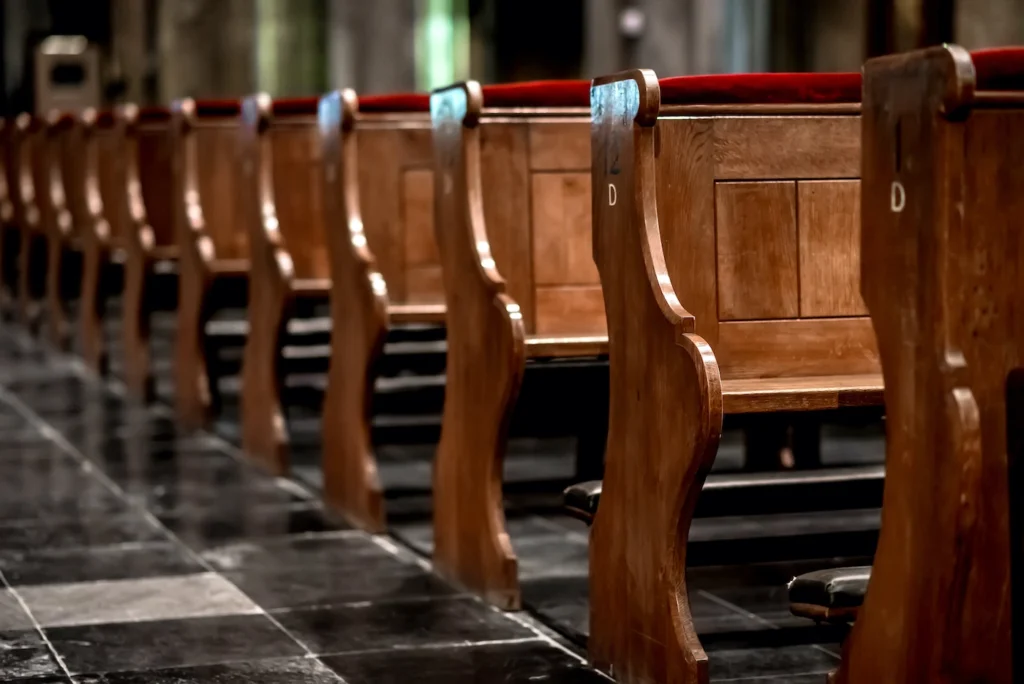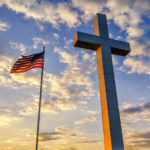Christianity in America is currently going through a watershed period as society and culture continue to secularize. Among younger adults, for every one person who goes from religiously unaffiliated to affiliating with a religion, there are five people who switch in the opposite direction, toward no religion. Having no religious affiliation is increasingly becoming normal, and even the expectation among certain enclaves of American life.
The United States is more ex-Christian and post-Christian than ever before in its history. How did this situation come about? And what does it mean for the nation? The key number concerning the frequently referenced “rise of the nones” is likely familiar to many: Roughly one-quarter of American adults, or 59 million people, are “nones”—that is, atheist, agnostic, or nothing in particular when it comes to religion. The proportion of “nones” in the US population hovered between 5 and 9 percent throughout the 1970s and 80s, but right around the year 1990, the percentage of nones began to climb to its current highpoint.
Less known is that only 30 percent of nones in the United States report having been raised with no religious affiliation. The rest, totaling about 41 million American adults, identified with some kind of religion earlier in life, but eventually left it. This segment of the population therefore is pivotal for understanding the shifting American religious landscape over recent decades. And it is those Americans—along with the social and cultural forces that tend to influence them—who are the topic of sociologist and theologian Stephen Bullivant’s book, Nonverts: The Making of Ex-Christian America, recently published by Oxford University Press.
A Nation of “Nonverts”
Start your day with Public Discourse
Sign up and get our daily essays sent straight to your inbox.Drawing from both survey data and interviews with a wide range of people, Bullivant provides a broad introduction to American adults who have thrown off their prior religious affiliations. The book is structured into nine chapters, which alternate between bigger-picture analysis/commentary and a series of “deep dives” into specific religious traditions. So, chapters 2, 4, 6, and 8 provide glimpses into disaffiliation from Mormonism, mainline Protestantism, evangelicalism, and Catholicism, respectively. Each of these tradition-specific chapters offers a helpful introduction to the character and troubles of each tradition. For anyone who wants to understand disaffiliation among one (or more) of those four traditions, these even-numbered chapters stand as quick and helpful overviews, brought to life by Bullivant’s skillful deployment of individual stories to represent larger themes.
Each of these chapters is, at the same time, broad and partial. They do not present findings that aim to be exhaustive or methodical. The chapters don’t analytically pick apart every conceivable reason that one might disaffiliate from a religion, the way past survey reports from Pew have done, for example. That’s not Bullivant’s purpose in writing. Instead, the chapter on “exvangelicals,” for instance, focuses on just three factors: purity culture, hypocrisy, and former President Trump. And readers hear about decades of sexual abuse scandals, devotional laxity, and simply not feeling it in various ways in the case of “recovering Catholics.”
As one would expect, Bullivant emphasizes that America’s “nonverts” are a diverse slice of the population on all sorts of metrics, such as age, race, and (to a limited degree) outlooks on politics. He also highlights that being religiously unaffiliated does not necessarily mean being entirely without faith of any kind, let alone an atheist. Only about 15 percent of nonverts are atheists, another 15 percent are agnostics, while 35 percent say they believe in a higher power of some kind (but not a personal God). In fact, 20 percent of American nonverts tell pollsters they believe in God and have no doubts. Large minorities (between 30 and 49 percent) of nonverts report believing in Heaven, Hell, miracles, and supernatural powers of deceased ancestors.
Nonverts is written for non-specialists, even for people who know little to nothing about how religion polling works, or who might have trouble wrapping their head around population statistics. Bullivant explains both the actual practice of religion polling and what statistics mean in simple terms. The book is written in a casual style, and the author’s evident wit adds to the experience of reading social analysis.
Thinking about How We Got Here
In the middle of the book, Bullivant dedicates a chapter to explaining “‘the making of ex-Christian America,’ over and above the individual ‘makings of ex-Christian Americans.’” He lays out his own “Grand Unified Theory” of the rise of the nones, starting back in the 1920s. He recounts a complex historical narrative, involving—among other factors—worries about godless communism during the early Cold War era (with unbelief seen as “un-American”), the major cultural and moral shifts of the 1960s, the visibility of the New Atheists, and finally landing on the immense consequences of the Internet and social media since the 1990s.
He also discusses the public view of traditional Christianity changing over recent decades from an esteemed social positive to a potential negative, even characterizing these changes as representing two different “worlds,” echoing Aaron Renn’s “three worlds” framework.
At one point, Bullivant sticks his neck out by giving a corrective to a currently-dominant thesis: namely, that the rise of the nones in the United States is attributable largely to repulsion at Christian entanglements with right-wing political and moral views, especially on sexuality, marriage, gender, and abortion. This thesis, he writes, is “an unhelpfully ideological spinning of what has actually happened.” In reality, the Catholic, evangelical Protestant, and LDS churches are not the ones who have moved on these questions. It is American culture that has sprinted ever further to the Left. Therefore, “[i]t’s not so much that these religious groups suddenly embraced a conservative agenda as that they were the only ones left holding it.”
This dynamic warrants wider and continued attention, even beyond what Bullivant has given it. In fact, there are two dynamics. The first is the dynamic by which American culture and society have lurched in increasingly progressive directions, leaving basic long-standing Christian teachings to look unbearably “right-wing” to some. And the second dynamic is the one by which the “ill-advised entanglements with the Religious Right” thesis has become the preferred way to explain Americans ditching their Christian upbringings, especially among journalists and academics. This is a space ripe for further theorizing and research, and Bullivant has put his finger on it.
Possible Futures for Christians in America
What continuing, large-scale “nonversion” away from traditional Christianity means for the nation—both presently and in the years ahead—is a huge “macro-level” question. And a pressing question, not just for sociologists and theologians, but for all of us one way or another. It is the kind of question sociologists ask when sociology is at its best and most rewarding.
Bullivant’s prognosis for Christianity in America is neither grim nor naïve, not unduly pessimistic or optimistic, but realistic. In the closing chapter, readers are oriented to enduring debates in sociology about religious vitality, the process of secularization, and American (religious) exceptionalism compared to other Western nations. Bullivant seems to up his frankness in the final nine pages, where he engages plainly with Christian thinkers who have written about the prospects of traditional Christian faith and practice in an increasingly post-Christian context, including Charles Chaput, Russell Moore, and Rod Dreher.
While Bullivant maintains the stance of the disinterested sociologist—not veering into his own confessional prescriptions—he directs his readers to something like Dreher’s “Benedict Option.” That is, a quietist vision of traditional Christians as exiles, intentionally networked with likeminded believers, living as a “Moral Minority” inside a degenerate culture. He even quotes Stanley Hauerwas’s well-known phrase: “I say in a hundred years, if Christians are people identified as those who do not kill their children or their elderly, we will have been doing something right.”
The book would have benefited from a more substantial engagement with other Christian thinkers—such as the Catholic post-liberals—whose public theology is much more assertive, and not nearly so quietist as that of Russell Moore, Rod Dreher, and Stanley Hauerwas. Bullivant very briefly discusses “Christian nationalism” or what he calls “MAGA Christianity,” but he portrays the future for Christians in America as one of quietism and exile and doesn’t seriously address the full range of “Options” currently on the table.
Over recent years, there have been lots of academic books venturing to explain secularity, “nonreligion,” and “the rise of the nones” in the United States. Bullivant’s new book stands out as not just about nones in general, but about those Americans who used to affiliate with a religion but no longer do. Usually, that means leaving evangelical Protestantism, mainline Protestantism, Mormonism, or Catholicism. Bullivant makes a solid case for the importance of such people for understanding American religion moving forward, and with Nonverts he has put another very fine book into the world. It is worth reading and pondering. (And despite what he tells you, don’t skip the endnotes.)
















